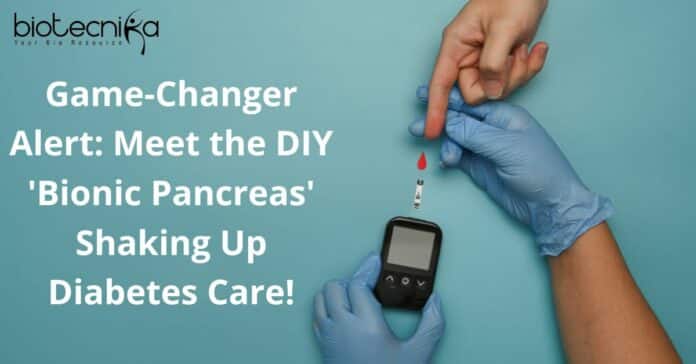Game-Changer Alert: Meet the DIY ‘Bionic Pancreas’ Shaking Up Diabetes Care!
Introduction:
A decade ago, a pioneering group of individuals with type 1 diabetes (T1D) embarked on a journey to transform their treatment through a do-it-yourself (DIY) approach. They recognized the potential of a simple software solution to alleviate the challenges of managing blood glucose levels, but existing companies weren’t moving fast enough. Today, we dive into the story of how this DIY ‘Bionic Pancreas’ is changing diabetes care, exploring its significance, achievements, and the evolving landscape of diabetes technology.
A New Path to Freedom:
The software in question offered the promise of liberating T1D patients from the constant monitoring and control of their blood glucose levels. Unlike non-diabetic individuals whose pancreas naturally releases insulin to regulate glucose levels, those with T1D must manage their blood sugar by administering insulin. This unrelenting task led Shane O’Donnell, a medical sociologist and a fellow T1D, to call it “almost inhumane.”
Aiming for Automation:
The DIY community harnessed the power of advanced technology, utilizing insulin pumps and wearable devices like constant glucose monitors. Yet, they sought something more: automation. Their goal was to create an algorithm capable of analyzing glucose data and programming
insulin pumps accordingly. In 2013, they rallied behind the hashtag #WeAreNotWaiting to unite their efforts.A Remarkable Development:
In February 2015, Dana Lewis, a member of the community, shared the code for an algorithm she and her collaborators had developed and tested. This seemingly modest step sparked a chain reaction. Users who adopted the algorithm began sharing their experiences, suggestions, and improvements, fostering a collaborative environment that fueled progress.
From DIY to Clinical Trials:
Today, approximately 30,000 individuals use open-source technology for automated insulin delivery (AID). Notably, both the safety and effectiveness of open-source systems have been validated through randomized controlled trials. In January, the US Food and Drug Administration (FDA) granted regulatory clearance for an AID system based on an open-source algorithm, marking a significant milestone.
Navigating a Changing Landscape:
While the DIY movement laid the foundation for innovation, the commercial market for AID has grown significantly. Five companies currently offer AID systems, catering to over 750,000 users. This surge raises questions about the future of the DIY community and its role in diabetes care.
Striking a Balance:
Experts hold differing views on the relationship between the DIY community and the commercial sector. Some see the DIY community as a testing ground for innovative ideas, while others envision a coexistence where users can choose what suits them best. The DIY movement thrives on its ability to provide rapid feedback and iterate on algorithm functions.
The Road Ahead:
The DIY community’s journey is far from over. As diabetes technology evolves, the community continues to push boundaries, emphasizing personalization and automation. Regulatory approval of open-source systems like Tidepool Loop paves the way for standalone algorithms seeking clearance. The possibility of interoperability between different algorithms and devices presents exciting opportunities.
Towards Personalization:
Sufyan Hussain, an endocrinologist, acknowledges the well-engineered solutions of the DIY AID community. The unique insights of T1D patients drive constant innovation, resulting in features that offer greater autonomy in blood sugar control. While commercial systems advance, open-source systems come closer to achieving fully closed-loop insulin delivery.
A Community’s Impact:
Ultimately, the DIY community’s impact is undeniable. Their commitment to pushing technology boundaries has paved the way for advancements in diabetes care. While the commercial sector flourishes, the DIY movement remains relevant, providing options and advocating for user choice. The vision is clear: whether commercial or DIY, the priority is the well-being and quality of life for individuals with diabetes.
Conclusion:
The DIY ‘Bionic Pancreas’ journey stands as a testament to the power of collective innovation. Through collaboration, feedback loops, and shared experiences, this community has played a pivotal role in transforming diabetes care. As the landscape evolves, the path ahead involves balancing commercial solutions with the spirit of innovation that defines the DIY movement. The future holds promise for enhanced personalization, automation, and improved quality of life for those living with T1D.
Follow BIOTECNIKA for the latest research updates.



























